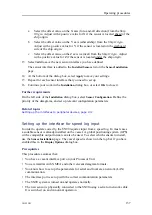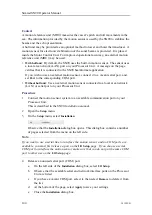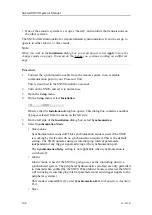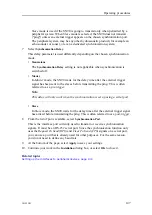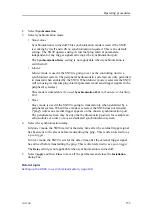
381295/B
147
Slave
mode is used if the SN90 is going to transmit only when permitted by a
peripheral system. When
Slave
mode is selected, the SN90 does not transmit
("ping") unless an external trigger appears on the chosen synchronization port.
The peripheral system may be any other hydroacoustic product (for example an
echo sounder or sonar), or even a dedicated synchronization system.
7
Select
Synchronization Delay
.
This delay parameter is used differently depending on the chosen synchronization
mode.
•
Stand-alone
The
Synchronization Delay
setting is not applicable when synchronization is
switched off.
•
Master
In
Master
mode, the SN90 waits for the delay time after the external trigger
signal has been sent to the slaves before transmitting the ping. This is often
referred to as a
pre-trigger
.
Note
This delay will only work when the synchronization is set up using a serial port.
•
Slave
In
Slave
mode, the SN90 waits for the delay time after the external trigger signal
has arrived before transmitting the ping. This is often referred to as a
post-trigger
.
8
From the list of ports available, select
Synchronization Port
.
This is the interface port currently used to transmit or receive synchronization
signals. It must be an RS-232 serial port. Since the synchronization function only
uses the
Request To Send (RTS)
and
Clear To Send (CTS)
signals on a serial port,
you can use a port that is already used for other purposes. For the same reason,
you do not need to define any baud rate.
9
At the bottom of the page, select
Apply
to save your settings.
10
Continue your work in the
Installation
dialog box, or select
OK
to close it.
Related topics
Содержание SN90
Страница 2: ......
Страница 186: ... 2020 Kongsberg Maritime ...
Страница 187: ......
Страница 188: ...Simrad SN90 Purse Seine and Trawling sonar Operator Manual ...





